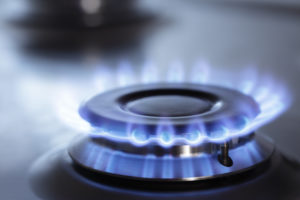 Natural gas rose slightly in early European trading on Tuesday, with market players eyeing active weather across the north-eastern US and an above-average inventory gain last week, while the rest of the country remains very warm to hot.
Natural gas rose slightly in early European trading on Tuesday, with market players eyeing active weather across the north-eastern US and an above-average inventory gain last week, while the rest of the country remains very warm to hot.
Natural gas for delivery in August traded 0.46% higher at $2.836 per million British thermal units at 08:22 GMT, shifting in a daily range of $2.840 – $2.822. The contract slid 1.6% on Monday to $2.823 after it gained 3.6% last week.
The Great Lakes and Northeast will see temperatures cool by several degrees today through Thursday as weather systems with showers and thunderstorms track through, dropping national natural gas demand to moderate. However, high pressure will be quick to rebuild during the weekend, leading to another round of very warm to hot temperatures in the upper 80s to 100s across almost the entire country that will boost national demand back to high compared to normal.
Meanwhile, the central and southern US will remain engulfed by uncomfortable conditions as highs remain anchored in the mid 90s to 100s, especially over the Southeast where the Heat Index will reach over 110 degrees Fahrenheit, NatGasWeather.com said. Pacific weather systems will keep the West Coast cooler, while the interior West remains very warm.
Next week, strong high pressure will continue to dominate the central and southern US, keeping highs in the mid-90s to lower 100s. The Great Lakes and Northeast will also warm up above normal occasionally, but passing Canadian weather systems will bring some comfortable cooling at times. However, any cooler systems that enter the US will be confined mostly to the Northwest and Northeast, NatGasWeather.com said, leaving the remaining portion of the country very warm to hot and driving strong cooling demand.
With weather trends through the end of the month mostly definitive, of main interest have now become developments in early August as data remain inconclusive on whether the ridge of high pressure will hold strong, or it could lose some ground to more seasonal temperatures over the East. Regardless of what happens over the north-eastern US, however, the rest of the country will remain very warm to hot, essentially keeping natural gas demand at least at average levels.
Readings
According to AccuWeather.com, the high in New York on July 22nd will be 92 degrees Fahrenheit, 8 above usual, before dropping to 82-84 degrees through July 30th, while Chicago will peak in the low to mid-80s for the rest of the month, near the average 83-84.
Down South, temperatures in Texas City will max out at 93-95 degrees through July 29th, above the usual 90, followed by a few-degree cooling. On the West Coast, Los Angeles will fail to exceed 78-79 degrees the next three days, compared to the average 84, followed by a jump to seasonal and a few degrees higher through the end of July.
Inventories
The Energy Information Administration reported last Thursday that US natural gas stockpiles expanded by 99 billion cubic feet in the week ended July 10th, exceeding analysts’ median projection for a gain of 95 bcf. This was also well above the five-year average increase for the period of 71 bcf and brought the total gas held in US storage hubs to 2.767 trillion cubic feet, expanding a surplus over the five-year average of 2.694 trillion to 2.7% from 1.7% a week earlier.
However, last week’s widespread warmth and higher cooling demand will lead to a much leaner build for this Thursday’s EIA report, but it will still exceed the average enough to affect pricing. Preliminary estimates point to a build of about 70 bcf for the week ended July 17th, compared to the five-year average gain of 53 bcf and the year-ago one of 92 bcf.
Continued very warm to hot temperatures will result in an even smaller build for next week’s report, with the July 30th reading expected to show an inventory gain of about 50 bcf for the week ended July 24th. This compares to the five-year average stockpiles increase for the period of 48 bcf, while supplies rose by 88 bcf a year earlier.
Pivot points
According to Binary Tribune’s daily analysis, August natural gas futures’ central pivot point stands at $2.827. In case the contract penetrates the first resistance level at $2.870 per million British thermal units, it will encounter next resistance at $2.916. If breached, upside movement may attempt to advance to $2.959 per mBtu.
If the energy source drops below its S1 level at $2.781 per mBtu, it will next see support at $2.738. In case the second key support zone is breached, the power-station fuel’s downward movement may extend to $2.692 per mBtu.
In weekly terms, the central pivot point is at $2.862. The three key resistance levels are as follows: R1 – $2.990, R2 – $3.111, R3 – $3.239. The three key support levels are: S1 – $2.741, S2 – $2.613, S3 – $2.492.





